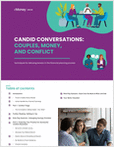Although commissions and expense ratios are easy to understand, financial advisors shouldn’t overlook another important measure of better ETF investing: savvy trade execution.
Most advisors understand the basics: The market price at which any ETF can be purchased is called the “ask” while the “bid” is the market price at which the same ETF can be sold. And the difference between these two prices is known as the “bid/ask spread.” What besides the bid/ask spread do you need to know about ETF orders? How can advisors coordinate their trades with trading hours of commodity and foreign exchanges to get better prices?
Research visited with Chris Hempstead, director of ETF execution services at WallachBeth Capital, to discuss best practices when it comes to placing and executing trading orders.
Do you think investors and advisors are getting smarter when it comes to ETF trade execution? What’s your top recommendation to them?
There has certainly been quite a bit of progress regarding ETF trade execution. Specifically, advisors and investors have been taught to use caution with market orders or to simply avoid them completely. The next step for investors will be to understand more about what defines an ETF’s liquidity. Far too often an ETF will be ignored simply because of low trading volume or low assets. The bid/ask spread of an ETF should be correlated to that of the underlying index. Lastly, understanding how the ETF tracks a particular index is critically important to understanding performance differentials. Some ETFs fully replicate an index and have very little if any tracking error, while others are optimized or use futures and can potentially have significantly greater tracking error.
How important is it for advisors using commodity and international ETPs to complete their trades when those markets are still open?
As a general rule, it is easier to source liquidity in an ETF when the markets of the underlying exposure are open. The simple reason is that a market maker can hedge his/her risk immediately with minimal time risk. If a market maker needs to wait 12 hours to hedge, you should expect a charge for that time risk. There are some exceptions to this general rule, however. ETFs with “super” liquidity will oftentimes trade fluidly regardless whether the underlying markets are open or closed. Names like GLD and EEM come to mind. With so many people using these products to express their views in these asset classes, liquidity in the underlying markets becomes less important.
The reputation of limit orders was badly maligned after the “flash crash” in 2010. Are these types of ETF orders still suitable?








 July 01, 2013 at 08:00 PM
July 01, 2013 at 08:00 PM









